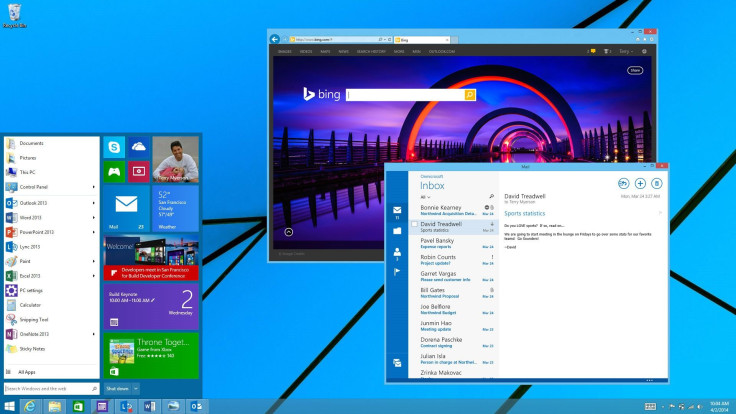Microsoft Will Release Early Windows 9 Beta In September, Report Says

Microsoft Corporation (NASDAQ:MSFT) will offer a look into its next operating system during an event this September, as it attempts to recapture some of the market it has ceded to competitors with its last two releases. According to a report Thursday from The Verge, what is likely Windows 9 is internally codenamed “Threshold” and still under development.
Microsoft will release a Windows 9 preview, or beta, for software developers on Sept. 30, according to the report. The latest news corresponds with Microsoft sources who told ZDNet’s Mary Jo Foley last week that the company would offer a preview of Windows 9 in late September or early October.

Microsoft is likely to stick with the numerical naming platform it started with Windows 7, but will not reveal the official name during the event, the report said. Windows 9 will include a number of new features and some old, such as a revived “start menu,” which Microsoft had removed from Windows in its effort to come up with an operating system design that worked better with touch inputs on tablets.
The report says it may not include an early version of Cortana, the software company’s assistant meant to rival Apple Inc.’s (NASDAQ:AAPL) and Google Inc.’s (NASDAQ:GOOGL) eponymous Now. Microsoft unveiled Cortana for Windows Phone earlier this year, which allowed it to catch “up with Apple’s iOS and Google’s Android in a major way,” according to The Guardian.
A new, revamped version of the Windows start menu appeared in screenshots released by Myce. They included small, square boxes including information such as the weather and news headlines, similar to the cards used in Google Now.
Microsoft is also experimenting with virtual desktops, which allow a user to have more than one desktop on a single computer, organizing and separating tasks such as web browsing and media consumption from work and ongoing projects, for example. Microsoft is also expected to remove the Charms bar in its next version of Windows.
© Copyright IBTimes 2025. All rights reserved.



















